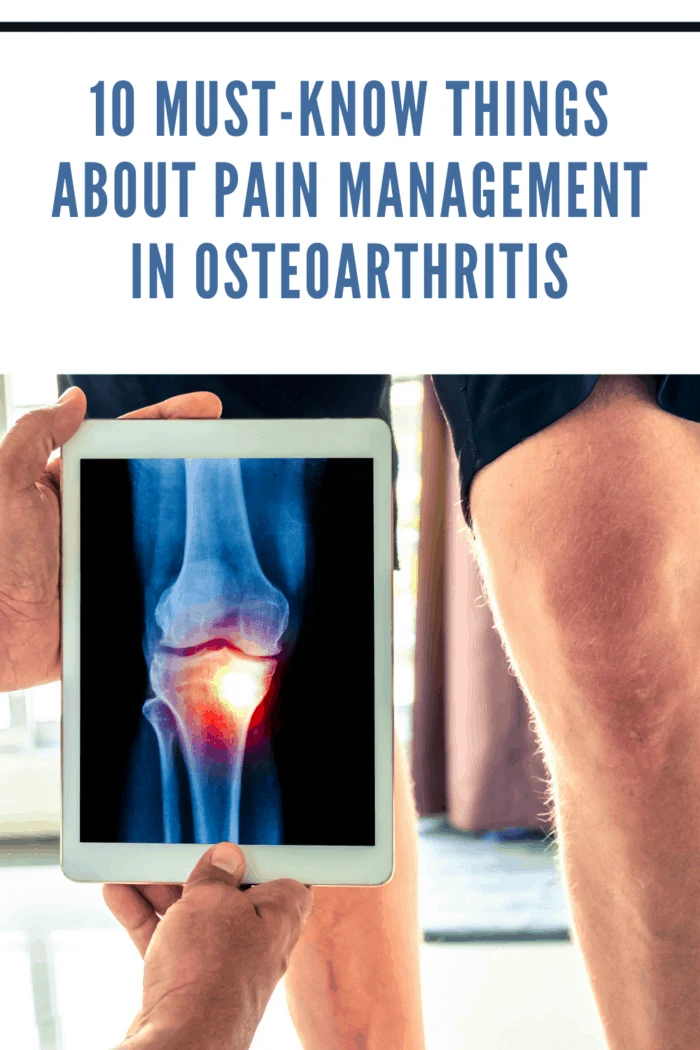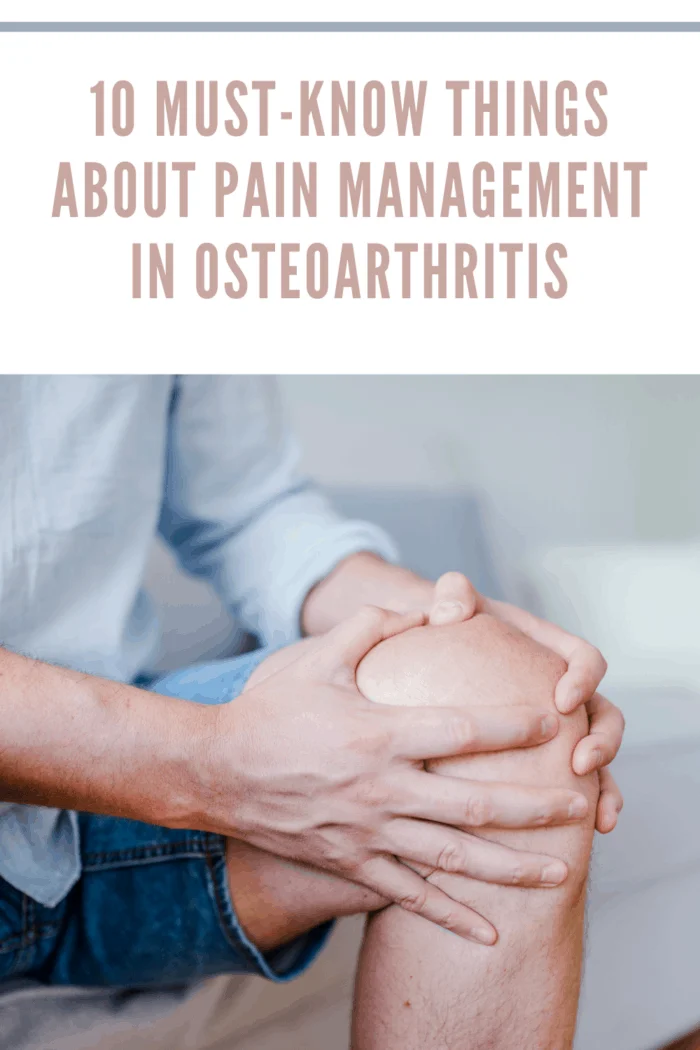Arthritis affects about 54.4 million people in the USA. CDC estimates that this figure will reach up to 78 million by 2040. This higher number points to a greater percentage of OA. The driving forces are the aging population and increasing obesity among the asses.
OA is the most common among people over 60 years of age. About 13% of patients are female, while 10% are male. Osteoarthritis is the worst form of arthritis. The repetitive use of joints, lack of joints, weakening of bones with age, and accidents are the major factors behind OA.
Surgery is not always the solution to this disease. The best way to deal with this disease is the self-management of the pain. Let us have a look at the best self-care tips for osteoarthritis.

10 must-know things about pain management in osteoarthritis
1.Staying active is the key:
OA begins when the synovial fluid in the joints begins to decrease.
The best way to keep that amount balanced is by keeping your body active.
Make exercise an integral part of your life. It will keep your joints moving.
Also, obesity is a major driving factor behind osteoarthritis.
If you indulge in regular exercise, you are bound to lose weight.
It will put less pressure on joints like the knee joint.
Refrain from doing heavy exercises or suddenly jumping on to the long-distance running groups.
Slowly build up the tempo. Start with stretching.
It will put a lesser strain on your body.
2. Say goodbye to obesity:
Obesity is the biggest risk factor for osteoarthritis, especially knee osteoarthritis.
Obese men have 5X more risk, while obese women have a 4X greater risk of contracting this disease.
When you become obese, your body weight gets unevenly deposited on your legs.
This puts undue pressure and gradual degeneration of the joints.
So, the best way to combat it is by keeping your body weight under watch.
Keep your weight under 25 in the BMI index.
You can calculate BMI by:
Weight (in kg)/height2 (in meters)
BMI between 18.5 and 24.9 denotes healthy weight.
3. Being organized is the key:
Generally, when osteoarthritis sets in, you are well beyond 60 years of age.
This age requires proper medication, exercise, and daily routine. Keep a tracker for your daily activities.
Take medications on time. Exercise daily.
Keep track of your OA pain level. Inform your doctor to find the best treatment.
4. Take proper diet:
You are what you eat. Diet is an important pillar of pain management in osteoarthritis.
Include proteins, vitamin C, omega-3-fatty acids, and minerals-rich food to ease the pain.
Stay away from fried, oily, and sugary food items.
Include fresh fruits and vegetables.
Make sure that you have a balanced diet in every meal.
It will not only keep your joints healthy but will also help with weight control.
5. Proper medications:
Talk to your doctor about what medicine best suits your pain type.
As we have mentioned earlier, keep a tracker to discuss this point.
Based on the duration and type of pain, your doctor may suggest just acetaminophen or ibuprofen, or a combination of various drugs.
Keep your medical history clear while discussing this point.
You should be careful if you are already taking drugs for heart or kidney ailments.
Also, never take any pain killer without your doctor’s recommendation.
6. Self manage the pain:
We would suggest that you first try with self-care tips before taking any pain killer.
Use a hot pack or cold pack on your pain point.
If you are experiencing stiffness, you should use a hot pack; it increases the blood flow and eases pain.
If you have swelling, you should go for a cold pack.
Patients of osteoarthritis experience pain even when the weather changes.
You should use a crepe bandage to provide warmth to the affected area and then use a hot or cold pack over it.
7. Try aides:
Many pain-management aids are available in the market, like braces, splints, canes, and bands.
Using them will greatly reduce your pain while supporting the joint.
It also reduces pressure on your joints. If you recently had surgery, it is a must to use.
There are different types of the brace in the market like functional braces, rehabilitative braces, prophylactic braces, and so on.
Use them in consultation with your doctor.
8. Take alternative medicines:
Osteoarthritis is a never-ending pain. You may try other treatment methods like acupuncture, massage, Ayurveda, or chiropractic.
These methods have shown remarkable positive effects.
Be sure to consult your doctor before trying any of these.
9. Take rehabilitative/ physiotherapy measures:
If you recently had surgery, you will require rehabilitation therapy.
It ensures that your joints gradually return to their original state.
Use braces or support during this period.
Be regular in your approach.
Always complete the rehabilitation course.
Leaving it mid-way may have a detrimental effect.
You can also take physiotherapy to ease the pain.
A trained professional will help you in easing out the stiffness and increasing the movement of the joints.
10. Have a positive approach:
Osteoarthritis is the disease of old age.
It takes time to come under control.
You cannot expect an instant result as soon as you begin to take the self-care tips.
Being consistent is the key.
Along with that, always have a positive attitude.
It will keep you motivated.

Join exercise groups and pain management groups to meet people facing the same issues.
It will help you communicate better, and that in itself is a therapy.
Embrace your condition and embark on a self-improvement journey.
Your 15 minutes of exercise or a no-fat diet will surely pay off.
Your pain will go away. Just keep yourself motivated.
Osteoarthritis needs a long rehabilitative period.
Take preventive measures while improving your lifestyle.
Regular exercise, a balanced diet, and a positive attitude are the key.
You should always take help from reputed pain management clinics such as synergyspinemd for pain management in fort Washington before starting any therapy.
This ensures that you get in touch with the best doctors and support staff.
